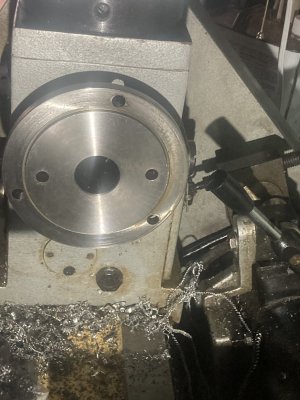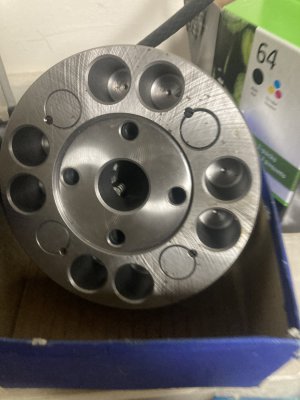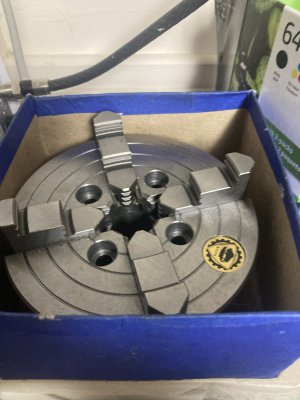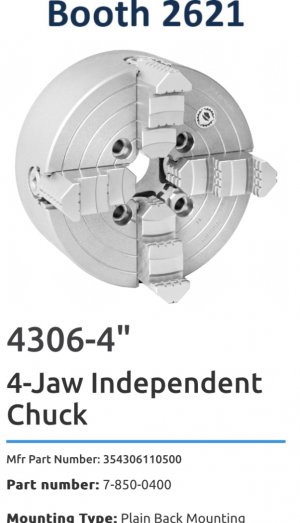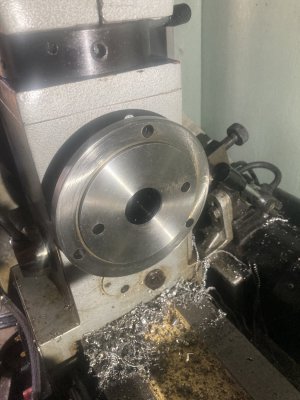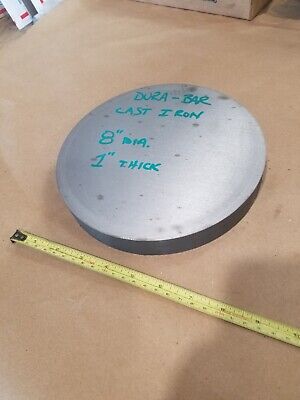do you already have a chuck for the lathe?
if you do, make a center plug for your new chuck. put a light center dimple in it using the tailstock and a centering drill.
Now you have a place to put your compass, and now it should be easier to create the layout.
You might want to do the same for your spindle hole, so you can verify center to hole and arcs..
What John (
@pontiac428) showed is how we did it long, long ago, and works quite well. I still swing arcs for many layouts (especially for wood working) because that's how I learned it.


